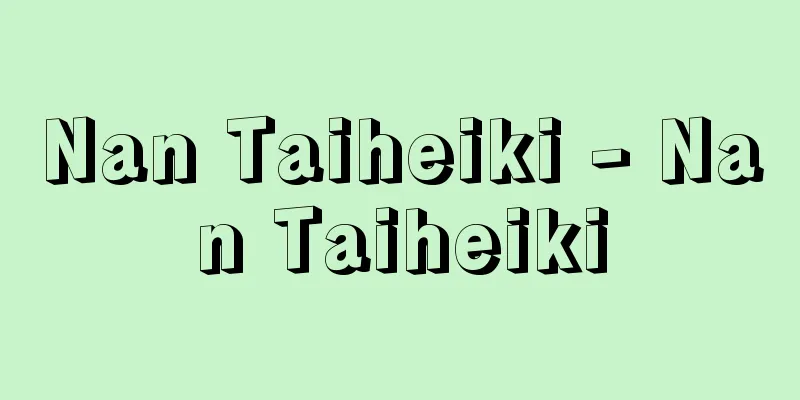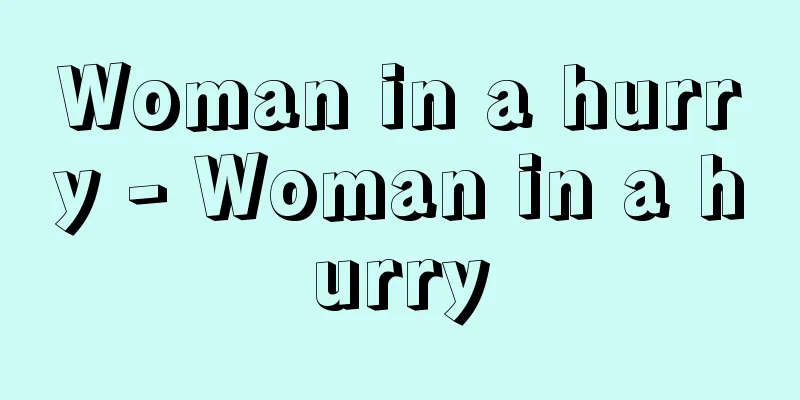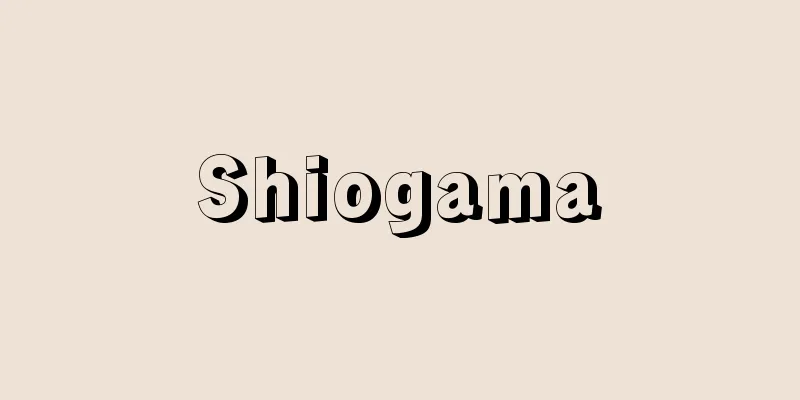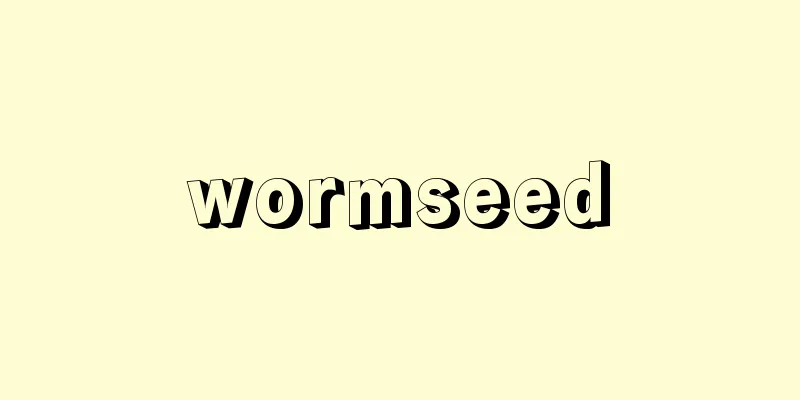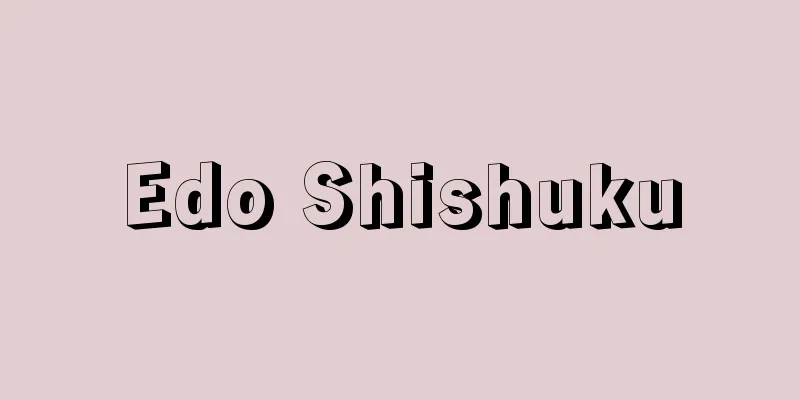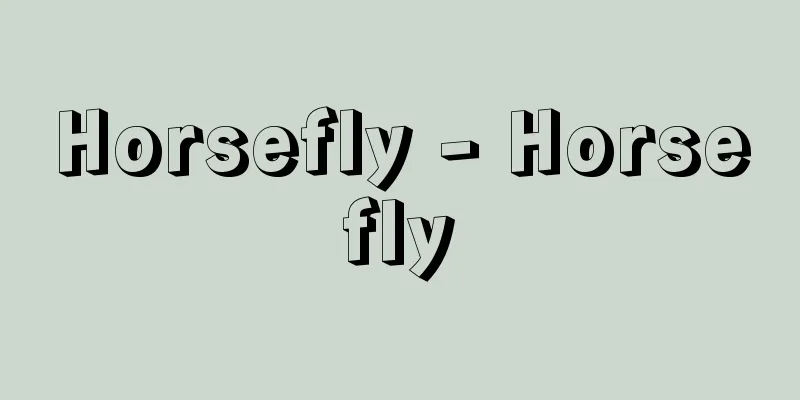"Kyoganokomusume Dojoji" - Kyoganokomusume Dojoji

|
…(1) The title of a jiuta song. Nakamura Tomijuro I performed Kyo Kanoko Musume Dojoji (Musume Dojoji) at the Edo Nakamuraza in 1753 (the 3rd year of the Horeki era) and was a big hit. He returned to Osaka and performed it again in 1759 as Edo Kanoko Musume Dojoji at the important stage of Kyushu Kanegamisaki Cape in the Kado Theater. The location of the dance from this performance remained in the jiuta, giving it the title. It is said that Fukakusa Kengyo added the koto. … From "Kane no Dan"...This part is often performed as an independent piece, a dance, or a solo recitation. The lyrics are quoted from the Nagauta piece "Kyokago Musume Dojoji" (Kyokago Musume Dojoji). [Mariyu Yokomichi]... From "Dojoji Mono"...Kikunojo revised the piece again, and in March 1844 (Enkyo 1) at the Nakamuraza Theater, he performed it under the title "Momochidori Musume Dojoji," changing the role of Keisei to "musume." The final version of the Dojoji piece was "Kyokago Musume Dojoji" ("Musume Dojoji"), performed by the first Nakamura Tomijuro at the Nakamuraza Theater in March 1853 (Horeki 3), and since then it has been combined with other themes and has spawned variants such as "Nakko Dojoji." The "Kishu Dojoji" from the end of the Edo period was composed as a simple Nagauta piece, but has choreography similar to that of Noh.... From "Daughter in Dojoji"... Nagauta. The original title is "Kyoganokomusume Dojoji". Lyrics by Tobun Fujimoto. From [Rokugo Shinzaburo (Rokugo Shinzaburo)]...The technique of the raijo (a traditional Japanese chant) used in the transformation of the fox, and the echo (kodama) used in the scenes of the deep mountains and the seashore, are said to be his creations. The mariuta (ball song) in Kyokanoko Musume Dojoji and the small drum in Yamazukushi are also said to be his creations. After retiring from the theater, he apparently changed his name to Rokugo Shinzaburo. ... *Some of the terminology used in "Kyokago Musume Dojoji" is listed below. Source | Heibonsha World Encyclopedia 2nd Edition | Information |
|
…(1)地歌の曲名。初世中村富十郎は1753年(宝暦3)に江戸中村座で《京鹿子娘道成寺》(《娘道成寺》)を演じて大当りをとり,大坂へ帰って59年角(かど)の芝居で《九州釣鐘岬(かねがみさき)》の大切(おおぎり)に《江戸鹿子娘道成寺》として再演したが,このときの舞踊の地が地歌にそのまま残りこの曲名がついた。深草検校が箏の手をつけたといわれる。… 【鐘ノ段】より…この部分を独立させて,仕舞(しまい)または独吟,一調として演じることも多い。長唄《京鹿子娘道成寺》などに詞章が引用される。【横道 万里雄】。… 【道成寺物】より…菊之丞はこの曲を再度改訂し,44年(延享1)3月中村座で《百千鳥(ももちどり)娘道成寺》と題し,傾城を娘に直して上演。これらを集大成し,道成寺物の決定版となったのが,53年(宝暦3)3月中村座で初世中村富十郎が演じた《京鹿子娘道成寺》(《娘道成寺》)で,以後,他の系統と合したものや,《奴道成寺》ほかの変型物を生んだ。幕末の《紀州道成寺》は素(す)の長唄として作曲されたものであるが,能に近い振りがつけられている。… 【娘道成寺】より…長唄。本名題《京鹿子娘道成寺(きようがのこむすめどうじようじ)》。作詞藤本斗文。… 【六合新三郎(六郷新三郎)】より…狐の変化(へんげ)などに使われる来序(らいじよ),あるいは深山,海浜の場面に打たれる〈谺(こだま)〉の手法は彼の作といわれる。また,《京鹿子娘道成寺》の〈まり歌〉〈山づくし〉の小鼓も彼の作調といわれる。劇場隠退後に六合新三郎と改めたらしい。… ※「《京鹿子娘道成寺》」について言及している用語解説の一部を掲載しています。 出典|株式会社平凡社世界大百科事典 第2版について | 情報 |
<<: Reinforced Wood - Kyokaboku
Recommend
Herero
…the Herero rebellion against the colonial author...
Small angle scattering - Small angle scattering
When X-rays pass through a particle with a size of...
Dinosaur turtle - Dinosaur turtle
…A large sea turtle found in the Late Cretaceous ...
United Nations Forces - Forces of the United Nations
…An international military force organized by the...
Nonmetallic inclusions
It refers to nonmetallic substances such as oxides...
Nicodemismo (English spelling)
The term was first used as a historical term by It...
Stone crown - Sekka
A polished stone tool in the shape of a crown. Be...
Poems of the Four Seasons (View of the Four Seasons) - Shikino-nagame
Titles of Nagauta, Jiuta/Koto Music, and Yamada Sc...
Odenwald
…The topography of the Rhine is contrasted sharpl...
Taping - taping
Taping involves using adhesive tape, similar to a ...
Somatiker
...Therefore, this school of thought is sometimes...
Wesley, S.
...This is partly because, with the modernization...
Iroha Tea House - Iroha Jaya
A title for Kabuki and Joruri. Premiere Genroku 11...
《Female Seigen》 - Onna Seigen
...A domestic drama. Commonly known as Onna Seige...
Mitsuishi [town] - Mitsuishi
A former town in Mitsuishi District, in the centra...
